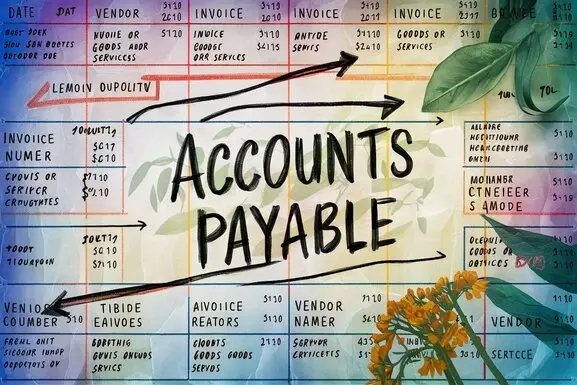How Are Accounts In The Accounts Payable Ledger Arranged?

The accounts payable ledger is a critical element of the general ledger that will maintain a record of the amount that a company owes its suppliers and vendors. The right organization of this ledger is important when it comes to tracking credit balances and due dates of the business. In this blog, I shall discuss how accounts are classified in the accounts payable ledger.
Grouping by Supplier
The common method of filing the accounts payable ledger is by suppliers since they are the source of all transactions. This means that for every vendor or supplier that the company buys goods on credit, there will be a separate account. For instance, where XYZ Company purchases supplies from ABC Supplier, Fast Delivery Co., and 123 Products Inc. – there will be individual accounts in the ledger where the suppliers’ invoices will be recorded and payments tracked.
It also allows one to identify the amount to be paid to the particular supplier and also get the payment records of the specific vendor. When an invoice arrives it is posted to the supplier’s account as per the supplier’s account. If a payment is made, then this payment is reported in the same account. This figure shows how much is being owed at the moment.
Sorting by Date
Furthermore, many accounts payable ledgers also categorize the entries in supplier accounts by date in addition to the supplier grouping. There are a few ways this can be done:
Chronological Order: It arranges records in chronological order where you can see the flow of the invoicing and payment process.
Due Date Order: All invoices and payments are sorted by the payment due date for each specific supplier account. This makes it easy to easily ascertain which bills are due for payment next.
Aging Buckets: Current subaccounts, 30 days, 60 days, 90 days past due, etc Subaccounts are created based on the past due date to show where problems or potential problems exist in the collection process.
By using the date as the second sorting criterion, the necessary structure is enhanced and it becomes even easier to find overdue bills that are due soon or when some frequent ‘’repeat offenders’’ are observed.
Reference Numbers and Subsidiary Ledgers
Furthermore, the accounts payable ledger tends to use reference numbers, cross-reference numbers, and subsidiary accounts to link transactions in different accounts. Here are some examples:
Internal Reference number - Each entry can be given a PO number which refers to entries in the purchase order ledger.
Invoice numbers – Invoicing numbering sequences link outstanding amounts to other receipts and deliveries recorded elsewhere.
Payment check numbers – The payment check numbers can make it possible to check the issued checks recorded in the cash payments journal.
Subsidiary supplier details ledger – A secondary account may further split a transaction by product type, departmental codes, site, etc., where necessary for a major supplier.
Such references and linkages to other financial records enhance organization and auditability yet do not complicate the ledger by adding other accounts payable.
The advantages of having structured account payable records.
Maintaining a well-structured accounts payable ledger has several important benefits:
- Enhances the ability of cash flow managers to predict when payments are due soon
- Reduces the time and effort required during payment processing as well as check issuance.
- Facilitates the resolution of any billing issues that may arise.
- Helps in the preparation and evaluation of the budget as it relates to costs.
- Assists in preparing financial statements and balance sheets.
- Aids in auditing and compliance
All in all, an organized payables ledger facilitates the management, reporting, and updating of this significant group of liability accounts. This can enhance the relations with suppliers, allow to identification of problems at the early stage, and positively affect the financial performance of the company.
Key Takeaways
In other words, the accounts payable or AP ledger will always be sorted first by supplier name, to ensure that purchases from each vendor are grouped. Other useful structures include the ability to sort entries by date and the use of reference numbers to link data to other accounts. It, in turn, helps a business keep track of the payments that are still due, fulfill obligations on time, control expenses, and make sound financial decisions.
The accounts payable process is made up of many interrelated components. However, every process first begins with systematically entering invoice numbers in a ledger where suppliers, dates, and reference numbers enable a business to monitor its expenses. Familiarizing oneself with all its subtleties is crucial for any bookkeeper or a financial controller striving to improve their AP operations.

